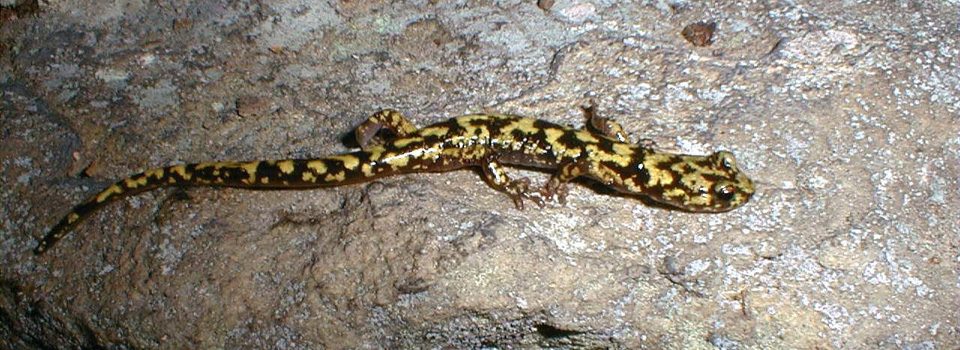
Herpetology
Databases
Collections
This database contains specimen information for the AUMNH herpetological collections. These specimens include materials stored in alcohol, as cleared and stained skeletons, and dry skeletons. This is the premiere collection of amphibians and reptiles of Alabama and includes significant holdings from the southeastern United States. Representative vouchered specimens from across the US are included as are significant series of Caribbean specimens that are invasive to South Florida and series of anoles from Mexico and Costa Rica. Other international specimens are curated, but these generally are representatives of unvouchered species accumulated from the pet trade. Our collections are currently in the process of being made available online. Currently our alcohol and cleared and stained specimens as well as our larvae and egg collections are searchable here through our web portal. We are in the process of adding the osteology, tissue, and photo voucher (AHAP) collections and these will be made available here as they come online.
Cottomouth Project
This database contains information on snakes marked and recaptured at a beaver pond (32º 29” 19’ N, 85º 35” 39’ W) in the Tuskegee National Forest. The project was begun as a collaboration among Scott Boback, Matt Williams, and Roger Birkhead, with most specimens being processed between 2001 and 2004. Additional specimens have been added over time, especially by Sean Graham.
Gopher Tortoise Project
This database contains information on populations of gopher tortoises processed by the Guyer lab in Alabama, Georgia, and Mississippi from 1988-2013. Data include surveys of burrow status, samples of marked and recaptured tortoises, and activities monitored with telemetry and still cameras.
Indigo Snake Project
This database contains information on Eastern Indigo Snakes used to repatriate this species to the Conecuh National Forest. Information includes measurements of females sampled from and returned to Georgia after they laid eggs at Auburn, and information on eggs incubated at Auburn and hatchlings raised at Auburn, Zoo Atlanta, and the Orianne Center for Indigo Conservation . This project was conceived by Mark Sasser and Jim Godwin, who continues to oversee it, with data being collected from 2008 to the present. Auburn University College of Science and Mathematics, Zoo Atlanta, Central Florida Zoo, Orianne Society, Alabama Department of Conservation and Natural Resources, Georgia Department of Natural Resources, US Forest Service, and US Fish and Wildlife Service collaborated to make this project happen.
Alabama Herp Atlas Project (AHAP)
The Alabama Herp Atlas Project is the brainchild of Mark Bailey, a former Mount student who established the project while he was working for the Nature Conservancy’s version of the Alabama Natural Heritage Program in the early years when the program was housed in Montgomery. This project encourages Alabamians to participate in monitoring of the state’s herpetofauna by submitting still photos, videos, or audio recordings of animals from their backyards or travels throughout the state. The AUM herpetology staff then verifies the identification and archives the records in an AHAP database. This project is also dedicated to providing educational materials that can be used by grade schools, colleges, and universities throughout the state. These materials are centered on training students to identify the state’s herpetofauna and developing proper museum techniques for archiving field observations. AHAP originated in 1994, with significant contributions over the next five years, and languished for a decade until revived under the guidance of David Laurencio.
Frog Call Monitoring
This database will contain hourly recordings of frog call activity at four sites in and around the Tuskegee National Forest. These year-round data have been collected since March 2010 and are continually being added to.
West Georgia Project
This database contains monthly samples of amphibians and reptiles along first order streams along an urban-rural transition in and around Columbus Georgia. The data include samples of transects and frog calls sampled by automated recording devices. These data were collected by Kyle Barrett (2004-2008).
EEE Project
This database contains information on amphibians and reptiles sampled during an NIH-funded study of Eastern Equine Encephalitis on the Tuskegee National Forest. Weekly samples along established transects, drift fences, and aquatic trapping are included within this file. These data were generated by Sean Graham (2008-2011).